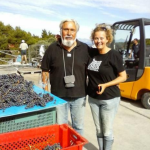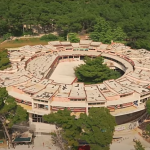While respected establishments are working hard to raise the level of their offer and quality, some restaurant owners are just good at raising their prices.
Even though the quality of service and food in restaurants along the Croatian coast has improved dramatically over the years, some restaurant owners still see the tourist season as their chance to fill up their pockets without putting in the required effort. On June 22, 2016, Slobodna Dalmacija took a tour along the coast to see what tourists and locals are expected to pay for very simple dishes in some of Croatia’s most renowned tourist destinations, and they were taken aback by some of the prices.
This, of course, is nothing new, and there is a simple solution to this problem, just avoid any of the touristy spots around main landmarks and you will be able to find great food and service at more than decent prices. But let’s have a look at what some restaurant owners expect you to pay from Opatija to Dubrovnik.
This summer, simple ham and eggs can set you back anything up to 110 kuna while pizzas have jumped to 90 kuna in just a few days. Mixed meat serving, which usually costs around 80 kuna (at the most) is now from 120 to 150 kn. We all know the infamous stories about coffee and cappuccino prices on Stradun that can climb up to 40 kuna a piece, but you wouldn’t pay much less if you were enjoying the sights of, say, Piazza San Marco in Venice. You pay for the location. Sometimes up to 300% more than what you’d pay just a few blocks away.
And while there is an all-out debate whether there should be two price lists (one for locals and one for tourists), inspection workers are adamant in saying that any establishment can have only one price list. If by any chance, any café or restaurant is caught with a double price list, the fine is now from 3 000 to 50 000 kuna. However, changing price lists just days before the high season is not illegal because it does not require any compliance from institutions or inspections. “Restaurant and bar owners create their own price lists and they are not required to authorize them, the only thing they have to do is adhere to the prices they’ve listed,” says one of the tourist inspectors.
They should, however, have some sort of an inspection that monitors what is being served to the guests. If you order Adriatic squid (calamari), in some establishments you will receive imported “krakens” as I like to call them because they are the mutant version of our own domestic squid. If we know that the price of frozen imported squid is around 20 kn per kilo wholesale and the price of fresh squid is 90-100 per kilo, it’s easy to understand the math used by restaurant owners. But that doesn’t mean you don’t have the right to send the squid back if you do indeed get stuck with the inferior imported product and the Menu clearly stated Adriatic squid.
One has to wonder why there’s a need to resort to such cheap tricks when the profits are reasonable enough as it is. Especially when it comes to wine. And while most respected establishments in all tourist destinations work hard all year round offer world class services, it’s the seasonal pizza joints and restaurants that use questionable methods to grab as much money as possible and run after the season.
Our advice? Stick to the restaurants and cafes that are recommended to you, read a review or two and stay clear of establishments near busy tourist sites.









